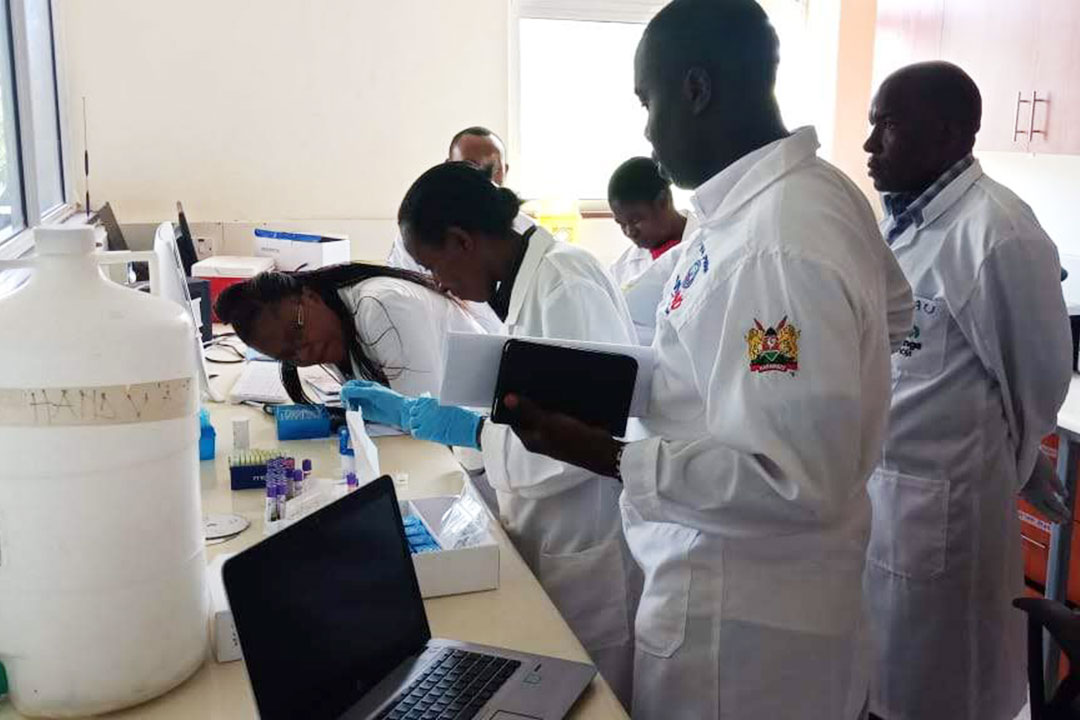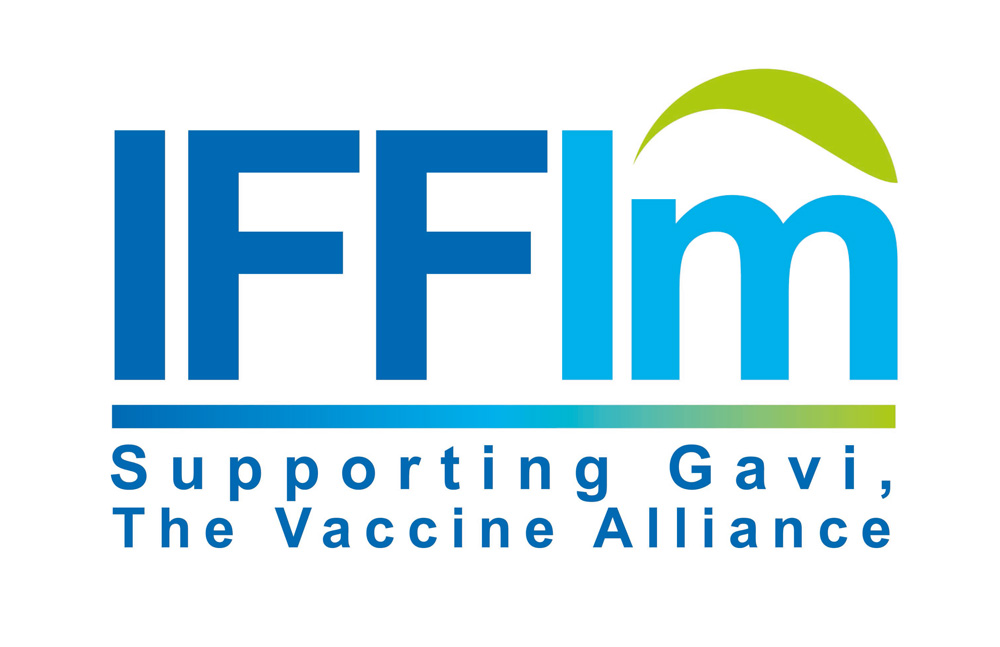Kenya pushes back yellow fever outbreak while diagnostic capacity improves outcomes across Africa
- Impact
- Kenya pushes back yellow fever outbreak while diagnostic capacity improves outcomes across Africa
Kenya pushes back yellow fever outbreak while diagnostic capacity improves outcomes across Africa
14 June 2022

A cross-section of health workers who have been trained to detect and reported suspected cases of yellow fever. Credit: Mike Mwaniki.
Yellow fever cases are on the rise again, driven by an interruption in vaccinations during the COVID-19 pandemic.
Yellow fever cases are on the rise again, driven by an interruption in vaccinations during the COVID-19 pandemic. But countries affected are responding swiftly, controlling outbreaks through vastly improved diagnostic testing and an emphasis on yellow fever vaccinations for those who are most vulnerable.
Announcements
IFFIm impact: Yellow fever
IFFIm has contributed US$ 245 million for yellow fever control which includes US$ 67.9 million in 2022 and US$ 43.6 million in 2021 to help countries respond to new cases.
An acute viral haemorrhagic disease transmitted by mosquitoes, yellow fever causes devastating epidemics in areas with low vaccination rates. Death rates can be as high as 50%. Fortunately, yellow fever can be prevented by a safe, affordable and highly effective vaccine. A single dose leads to long-term, probably even lifelong, immunity in 99% of people vaccinated.
IFFIm has been a major contributor to Gavi’s yellow fever control programmes, and has, to-date, disbursed US$ 245 million to Gavi for yellow fever control (routine immunisation, yellow fever campaigns, and yellow fever stockpiles) which includes recent disbursements of US$ 67.9 million in 2022 and US$ 43.6 million in 2021 to help countries respond to new cases.
Prompt intervention in Kenya
Kenya recently reported its first yellow cases in more than a decade. In March 2022, the country’s Ministry of Health issued a yellow fever outbreak alert following the death of three people in Isiolo County, which had recorded its first case in January. Gavi and WHO are now helping deploy yellow fever vaccines in the affected regions.
Kenya’s Health Ministry is managing the outbreak by deployed a rapid response team of doctors, epidemiologists, marketing and data collection staff and entomologists.
Abdi Guyo, who lives in Isiolo’s Garbatulla sub-county, says people in the area are eager to be vaccinated so they can protect themselves against yellow fever. “The majority of the people in this area are pastoralists who move from place to place in search of pasture and water for their livestock and we are therefore appealing to the Health Ministry to move with speed and initiate yellow fever vaccinations.”
Improved diagnostics save lives and resources
Gavi‘s major expansion in yellow fever diagnostic capacity in Africa has vastly improved tracking of the disease over the past three years, avoiding the expense of emergency vaccination campaigns and preventing further spread.
Data from these diagnostic tests are being used to drive crucial immunisation programme decisions, saving lives and conserving health care resources. In the last three years, diagnostic data prompted Uganda, a country at high risk, to introduce the yellow fever vaccine into its routine immunisation programmes. Diagnostic data also provided a course correction by showing that at least three disease outbreaks suspected of being yellow fever in various countries were not in fact yellow fever. This information saved millions of dollars in resources that might have been spent on unnecessary yellow fever outbreak response campaigns.
Share this article
Restricted Access Library
 The material in this Restricted Access Library is intended to be accessed only by persons with residence within the territory of a Member State of the European Union and is not intended to be viewed by any other persons. The material in this Restricted Access Library is provided by IFFIm for information purposes only and the materials contained herein were accurate only as of their respective dates. Certain information in the materials contained herein is not intended to be, and is not, current. IFFIm accepts no obligation to update any material contained herein.
The material in this Restricted Access Library is intended to be accessed only by persons with residence within the territory of a Member State of the European Union and is not intended to be viewed by any other persons. The material in this Restricted Access Library is provided by IFFIm for information purposes only and the materials contained herein were accurate only as of their respective dates. Certain information in the materials contained herein is not intended to be, and is not, current. IFFIm accepts no obligation to update any material contained herein.
Persons with residence outside the territory of a Member State of the European Union who have access to or consult any materials posted in this Restricted Access Library should refrain from any action in respect of the securities referred to in such materials and are otherwise required to comply with all applicable laws and regulations in their country of residence.
By clicking Access restricted content: DYNAMIC-LINK-TEXT I confirm that I have read and understood the foregoing and agree that I will be bound by the restrictions and conditions set forth on this page.
The materials in this Restricted Access Library are for distribution only to persons who are not a "retail client" within the meaning of section 761G of the Corporations Act 2001 of Australia and are also sophisticated investors, professional investors or other investors in respect of whom disclosure is not required under Part 6D.2 of the Corporations Act 2001 of Australia and, in all cases, in such circumstances as may be permitted by applicable law in any jurisdiction in which an investor may be located.
The materials in this Restricted Access Library and any documents linked from it are not for access or distribution in any jurisdiction where such access or distribution would be illegal. All of the securities referred to in this Restricted Access Library and in the linked documents have been sold and delivered. The information contained herein and therein does not constitute an offer for sale in the United States or in any other country. The securities described herein and therein have not been, and will not be, registered under the U.S. Securities Act of 1933, as amended (the "Securities Act"), and may not be offered or sold in the United States except pursuant to an exemption from, or in a transaction not subject to, the registration requirements of the Securities Act and in compliance with any applicable state securities laws.
Each person accessing the Restricted Access Library confirms that they are a person who is entitled to do so under all applicable laws, regulations and directives in all applicable jurisdictions. Neither IFFIm nor any of their directors, employees, agents or advisers accepts any liability whatsoever for any loss (including, without limitation, any liability arising from any fault or negligence on the part of IFFIm or its respective directors, employees, agents or advisers) arising from access to Restricted Access Library by any person not entitled to do so.
"Relief" for mothers in Bayelsa state as malaria vaccine makes waves
07 November 2025
